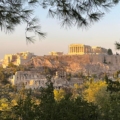I had the chance to start the year 2023 in a country I dreamed of visiting since childhood: Egypt. Thanks to the travel agency Les Aventureurs, I was able to spend a week with a very nice group and an Egyptian guide with an incredible knowledge of his country (all eras included) along the Nile.
On board our Dahabiya, we went up the 2nd largest river in the world from Luxor to Aswan, to visit each day one or more temples, among the most mythical of Ancient Egypt.
We were also able to visit villages of fishermen and peasants, cut off from the “modern” world, where the change of scenery was total.
I describe you in this article the different temples or places we could visit, with my impressions, my advices and the pictures I could take on site.
Colossi of Memnon
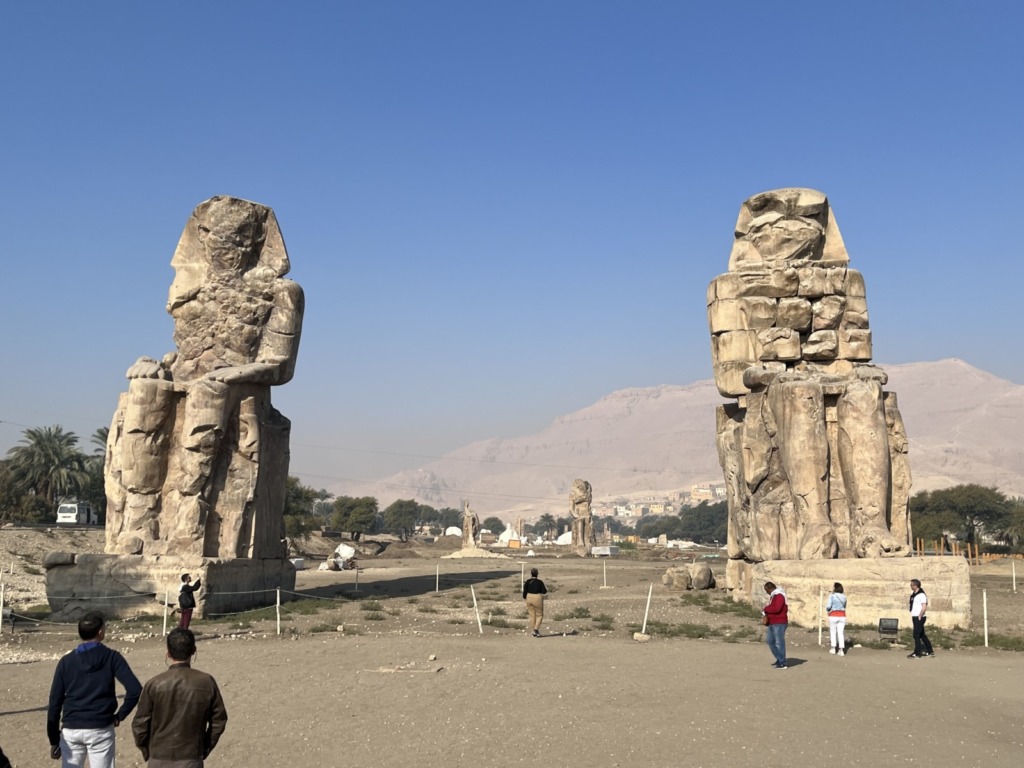
The Colossi of Memnon are two monumental pink granite statues that stand at the entrance to the Valley of the Kings, on the west bank of the city of Luxor in Egypt. The statues are 18 meters high and represent Pharaoh Amenhotep III sitting on his throne. The colossi were built around 1350 BC during the 18th dynasty.
The colossi were named after the Greek mythological character Memnon, who was supposedly buried in the area. The colossi have been damaged over the centuries due to erosion and earthquakes. One of the colossi was even damaged to the point where it made a strange sound when the sun rose, this led to the belief that it was haunted by the spirit of Memnon. This led to the statue being considered a place of pilgrimage for travelers and tourists who came to hear the strange sound.
Today, the Colossi of Memnon are still standing and attract thousands of visitors every year. They are part of an archaeological site that is a UNESCO World Heritage Site.
The Colossi of Memnon are two monumental pink granite statues that stand at the entrance to the Valley of the Kings, on the west bank of the city of Luxor in Egypt. The statues are 18 meters high and represent Pharaoh Amenhotep III sitting on his throne. The colossi were built around 1350 BC during the 18th dynasty.
The colossi were named after the Greek mythological character Memnon, who was supposedly buried in the area. The colossi have been damaged over the centuries due to erosion and earthquakes. One of the colossi was even damaged to the point where it made a strange sound when the sun rose, this led to the belief that it was haunted by the spirit of Memnon. This led to the statue being considered a place of pilgrimage for travelers and tourists who came to hear the strange sound.
Today, the Colossi of Memnon are still standing and attract thousands of visitors every year. They are part of an archaeological site that is classified as a UNESCO World Heritage Site. Translated with www.DeepL.com/Translator (free version)
In my opinion : These colossus are really impressive when you stand at their feet. It is a good introduction before visiting the valley of the Nobles and the Kings. In 15 minutes, the visit is complete, it would be a shame to miss it.
Valley of the Nobles
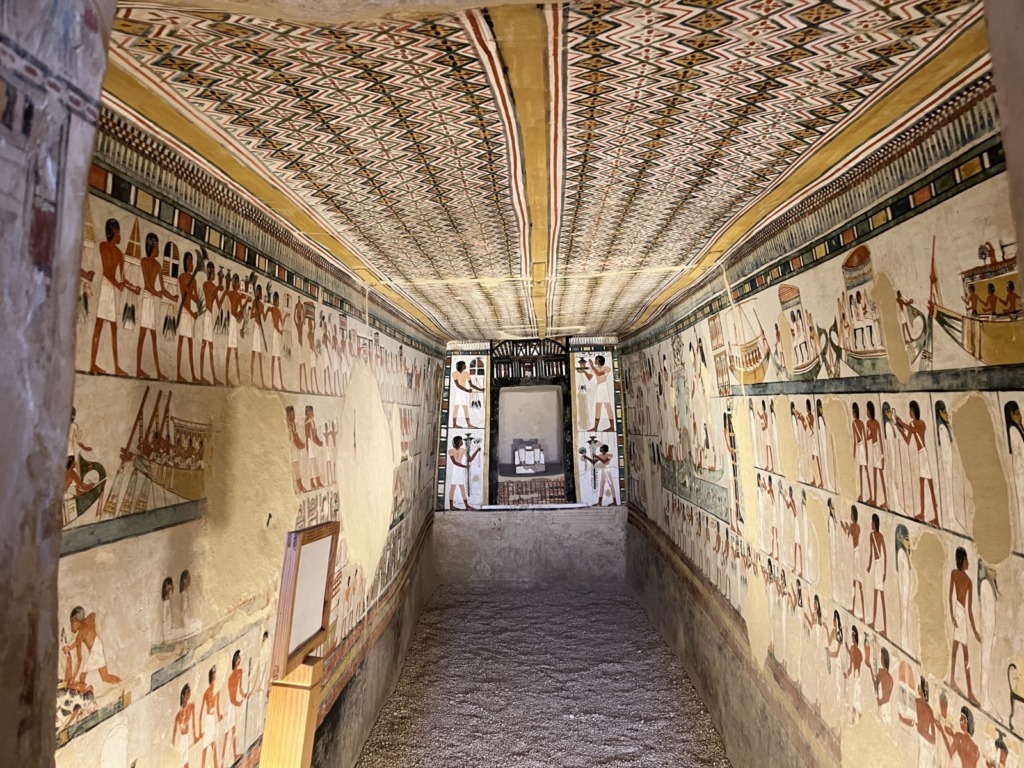
The Valley of the Nobles site includes nearly 500 tombs of Theban nobles and high officials. While the royal tombs were hidden away in an isolated valley, the Tombs of the Nobles were dug in the mountain overlooking the river Nile, as they wouldn’t have contained even a fraction of the royal treasure.
With so many wondrous tombs in the area, it is advisable to visit certain key places of interest. Nile River cruises are by far the best way to experience Egypt, but not many cruises include a visit to this site even though it is one of the top attractions in Luxor. As such, it is best to visit the site before or after a cruise, or as part of a standalone Luxor tour
In my opinion : Few tour packages include a visit to this site, although it is one of the main attractions in Luxor. It is therefore best to visit this site before or after a cruise, or as part of an independent tour of Luxor.
The tombs are totally different from those you can visit in the Valley of the Kings!
Valley of the Kings
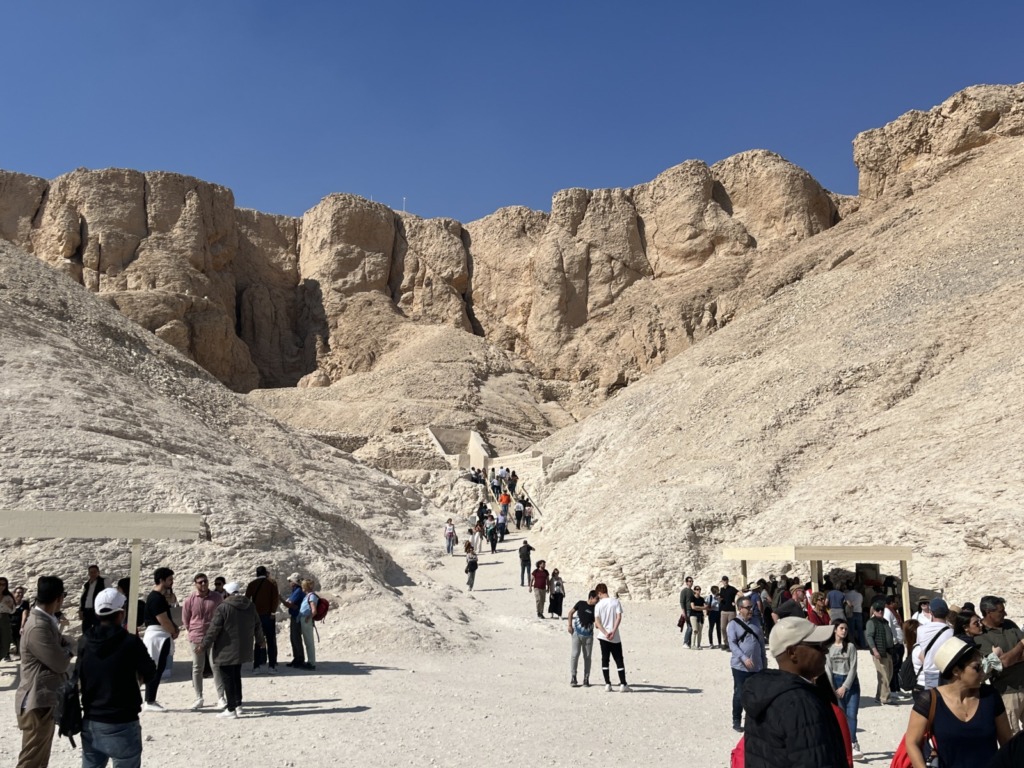
The Valley of the Kings is a valley located in Egypt, on the west bank of the Nile river in the Theban Necropolis, near the modern city of Luxor. It was used as a royal burial ground for pharaohs of the New Kingdom period (1539–1075 BCE). The valley contains 63 tombs, including those of Tutankhamun, Rameses II, and Rameses III. The tombs are decorated with intricate carvings and hieroglyphs that tell stories of the pharaohs, their reigns, and their beliefs in the afterlife.
The Valley of the Kings was discovered by accident in the late 18th century by Giovanni Belzoni, a treasure hunter, and since then it has been excavated and explored by many archaeologists, which has uncovered a wealth of information about the pharaohs and their cultures. The tombs were built to be hidden and difficult to find in order to protect the pharaohs’ mummies and grave goods from tomb robbers.
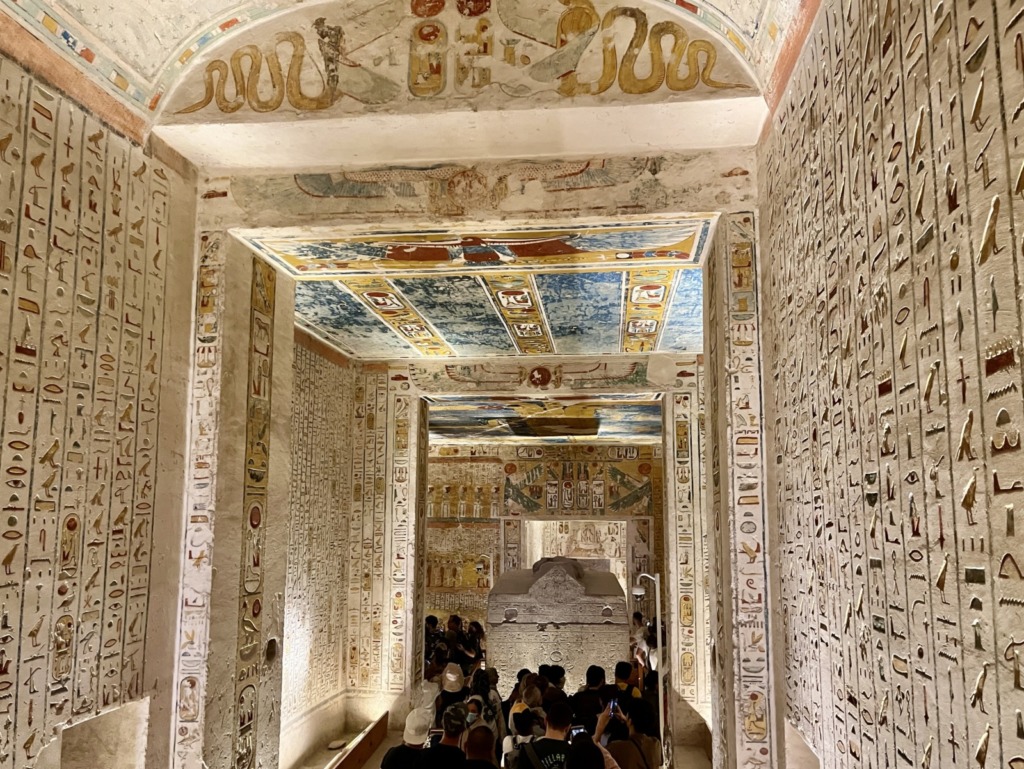
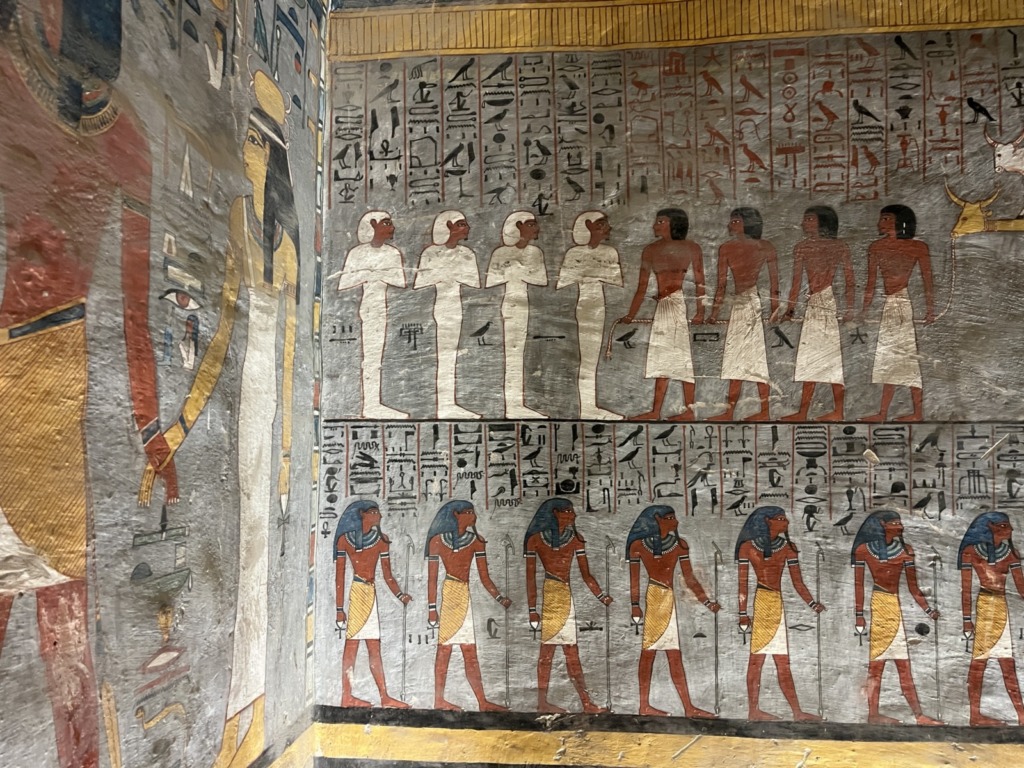
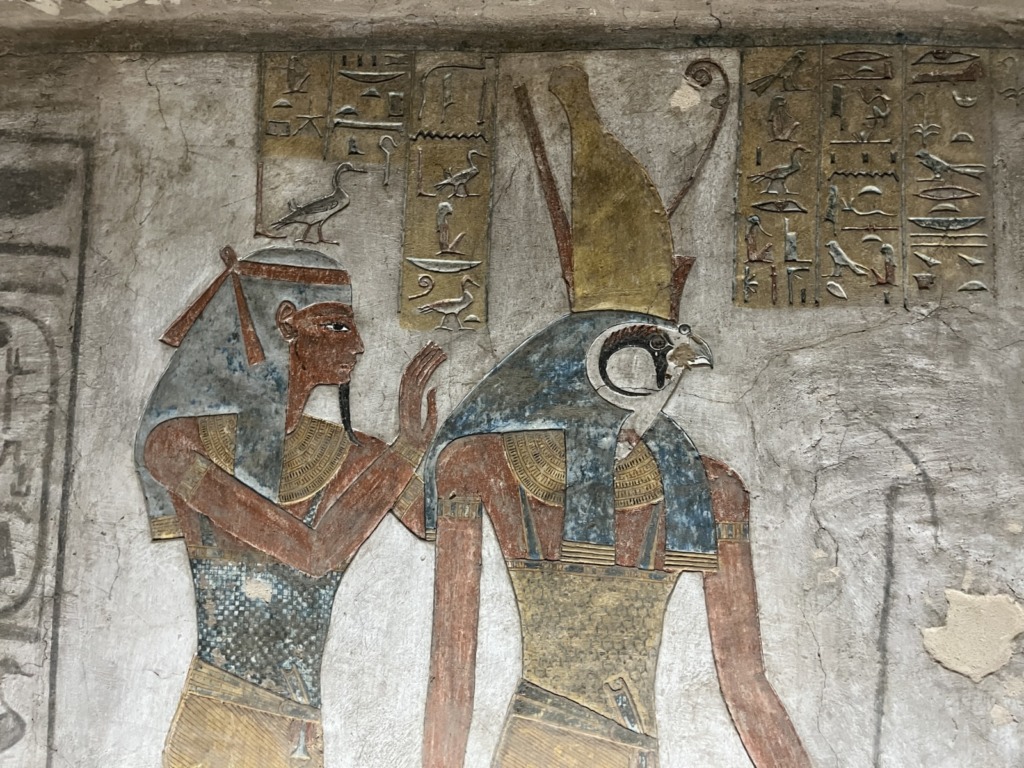
The Valley of the Kings is now a popular tourist destination and it is considered as one of the most important archaeological sites in Egypt. It is also a UNESCO World Heritage Site and a unique legacy of ancient Egyptian civilization.
In my opinion : A truly unforgettable visit… Make sure you choose the tombs you will visit beforehand, because the basic ticket only includes the visit of three tombs. Some, like Tutankhamen’s, require the purchase of a separate ticket.
Temple of Horus at Edfu
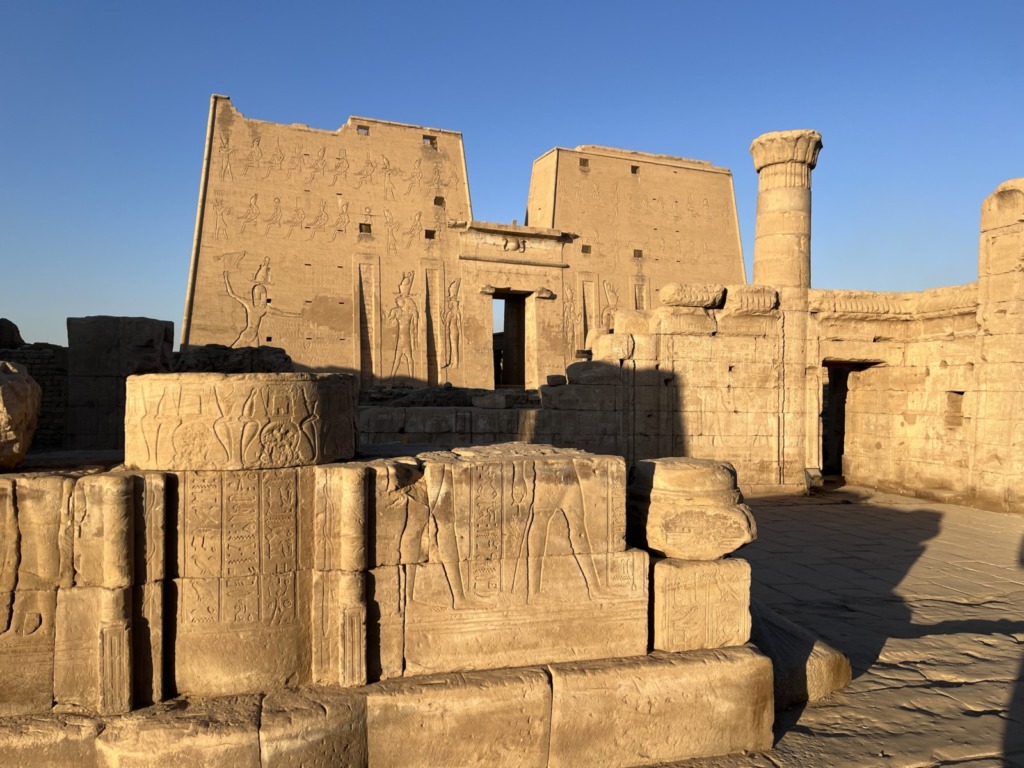
The Temple of Horus in Edfu is one of the best preserved temples of ancient Egypt. It is located in the city of Edfu, in Upper Egypt, on the left bank of the Nile. It was dedicated to the god Horus, the falcon god, who was particularly venerated in this region. It was built during the Ptolemaic period (305-30 BC) and is considered one of the most important temples dedicated to Horus.
The temple is known for its detailed reliefs that depict the religious stories and beliefs of ancient Egypt. It is also known for its large inner court and monumental pylons. It was built with local materials such as granite and limestone, and is decorated with battle scenes and cult scenes.
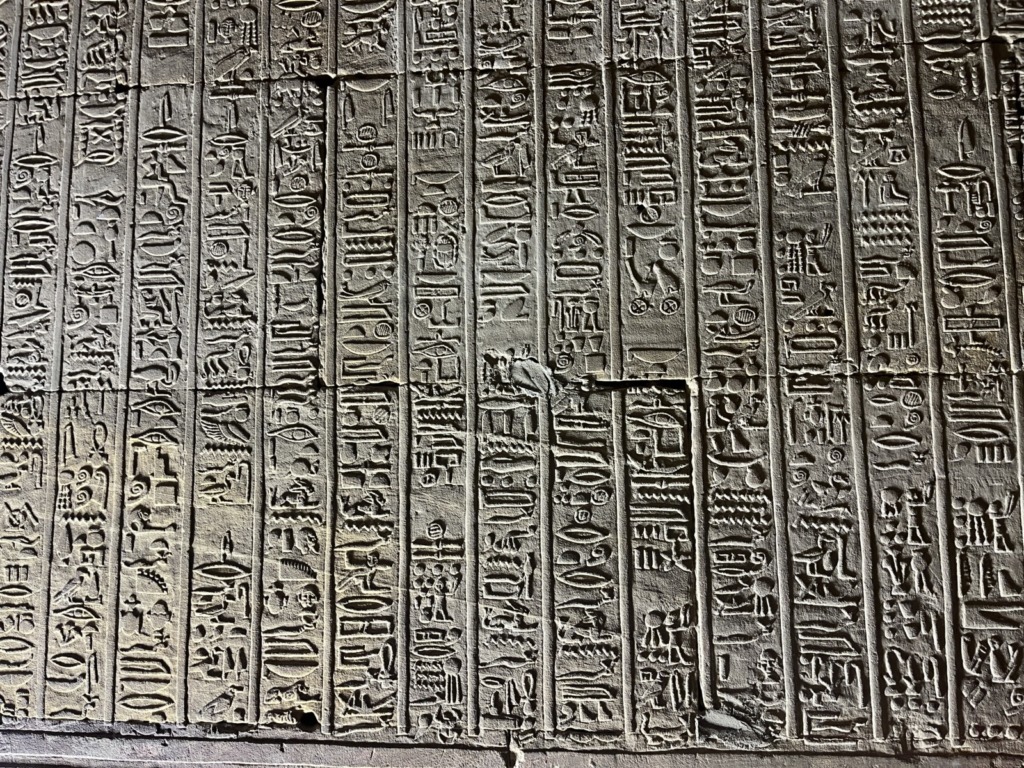
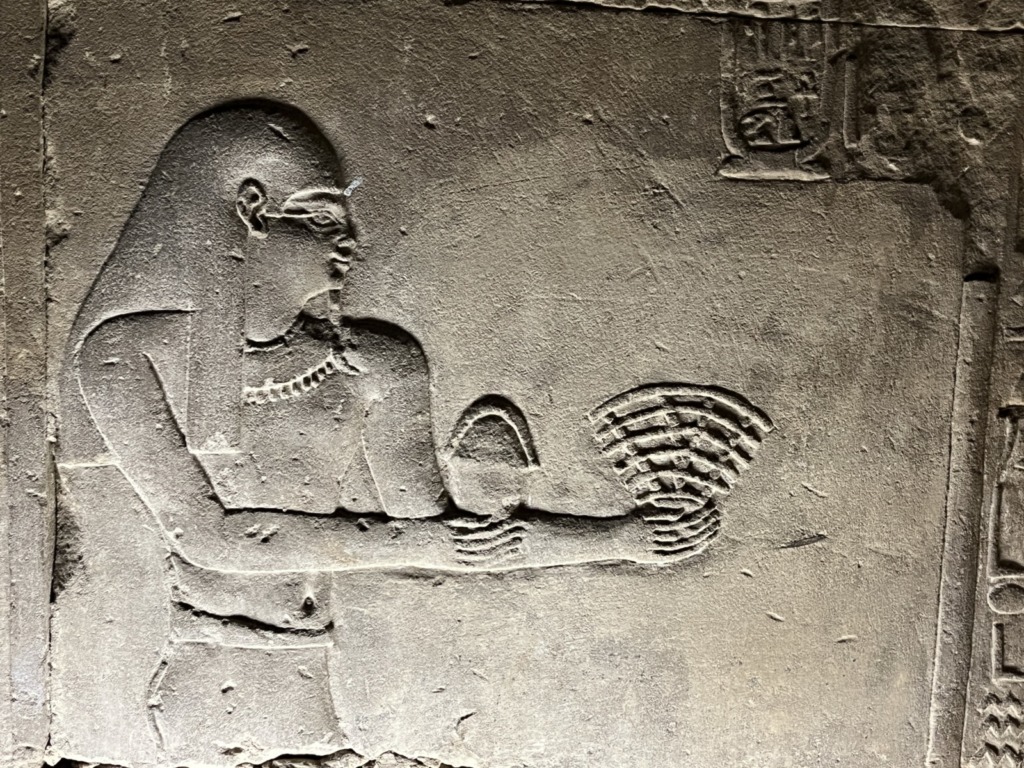
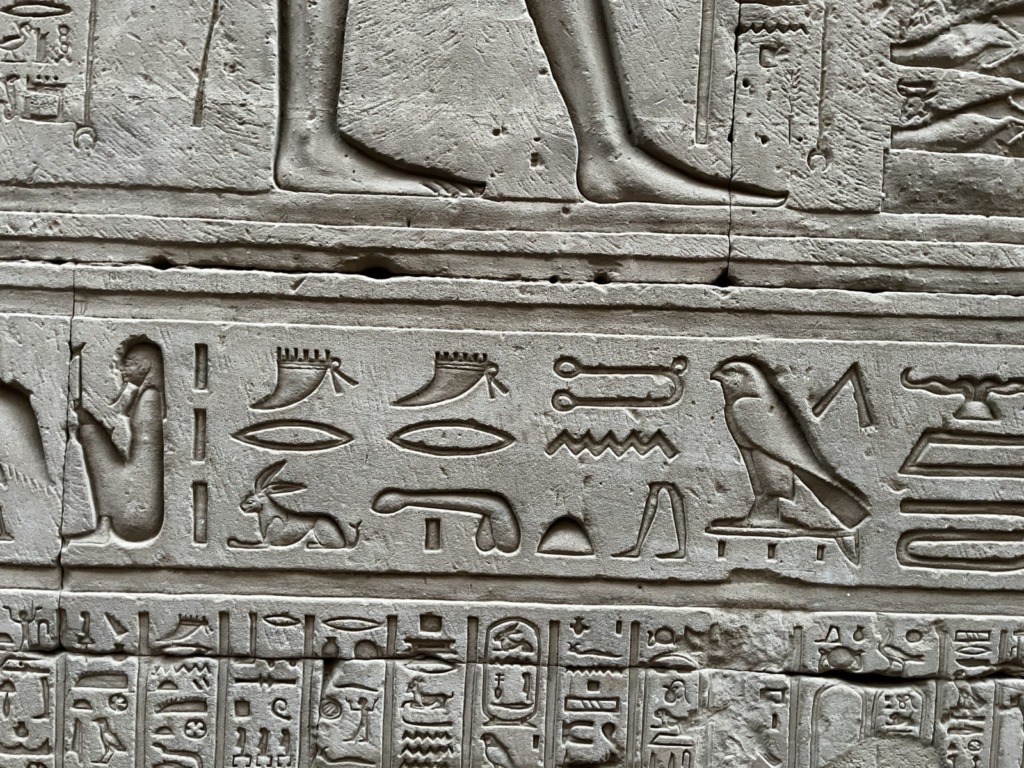
The Temple of Horus at Edfu is a popular tourist site and is considered one of the gems of Egyptian architecture. It is listed as a UNESCO World Heritage Site and is an outstanding example of ancient Egyptian religious architecture. It is still today a place of pilgrimage for believers and lovers of history and architecture.
In my opinion : A magnificent temple, to be visited with a guide to understand the meaning of certain decorations and hieroglyphs. At nightfall the luminosity is incredible!
Temple of Kom Obo
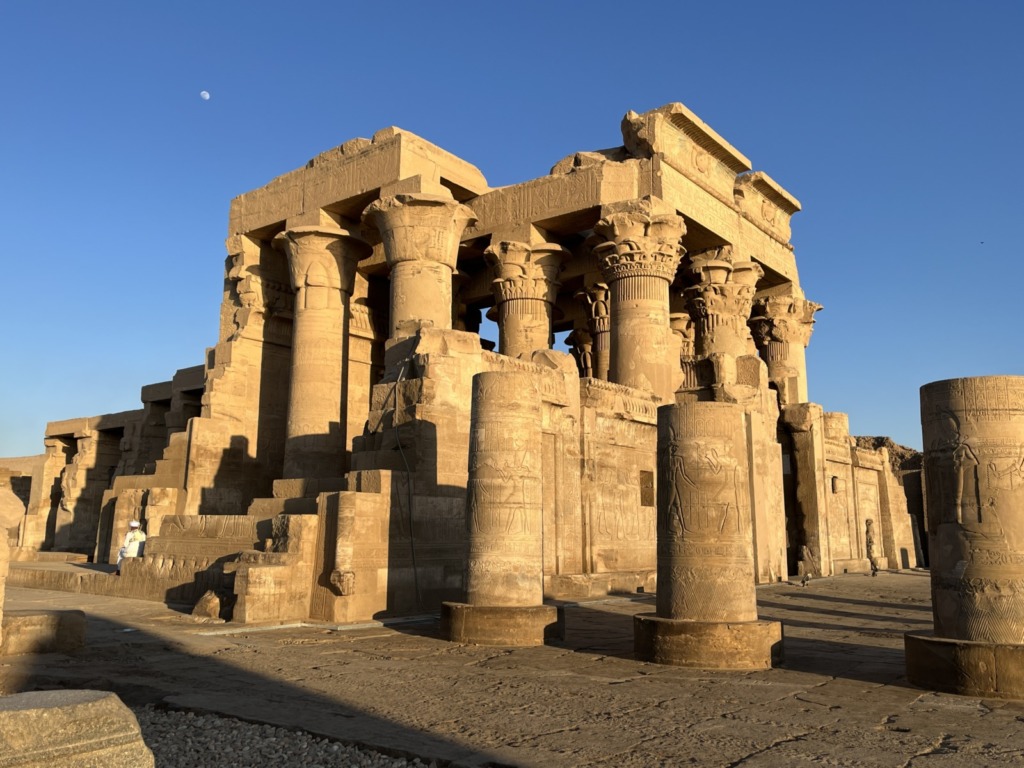
The Temple of Kom Ombo is a double Egyptian temple dedicated to the gods Sobek and Haroeris, located on the left bank of the Nile, in the modern city of Kom Ombo, in Upper Egypt. It was built during the Greco-Roman period, between the end of the 3rd century BC and the 2nd century AD. It is one of the few temples in ancient Egypt to have been dedicated to two different deities.
The temple is known for its symmetrical layout, which includes sections dedicated separately to Sobek and Haroeris, with courtyards, hypostyles and chapels dedicated to each god. It is also known for its magnificent reliefs depicting battle scenes, religious ceremonies, hunting scenes and cult scenes.
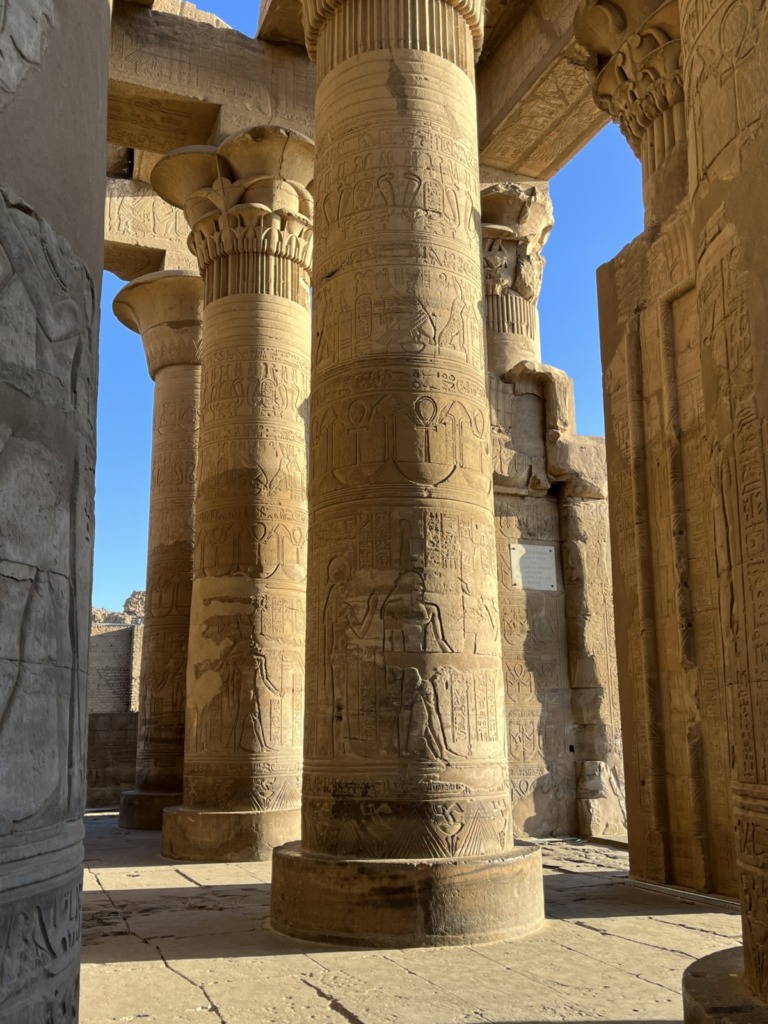
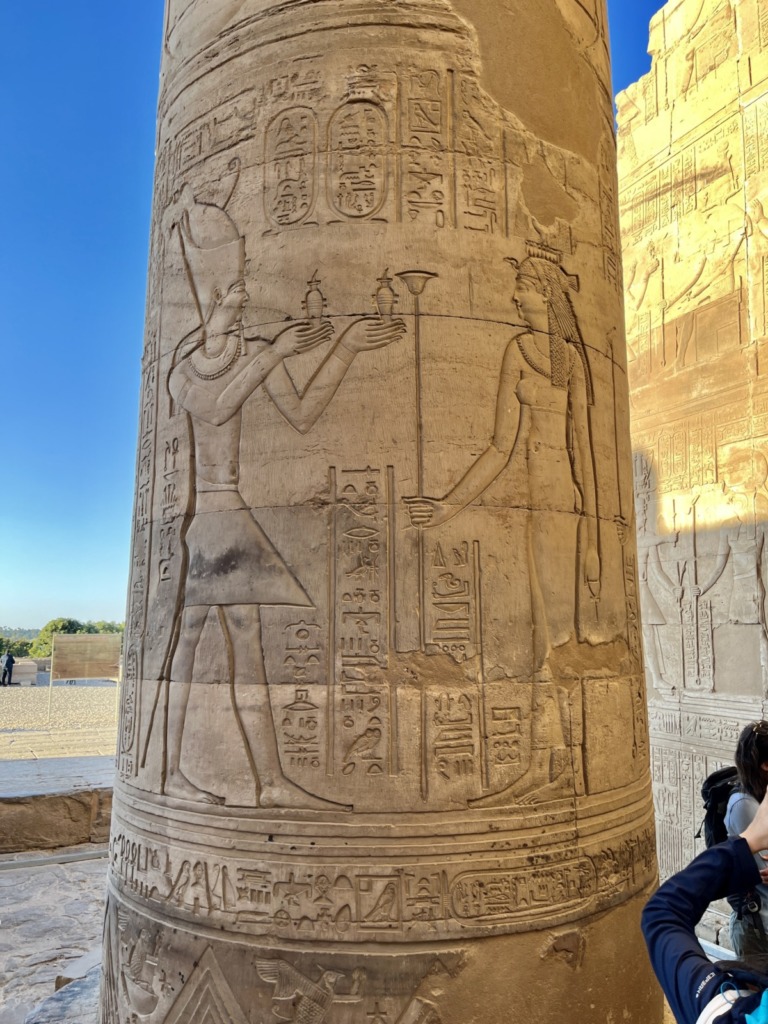
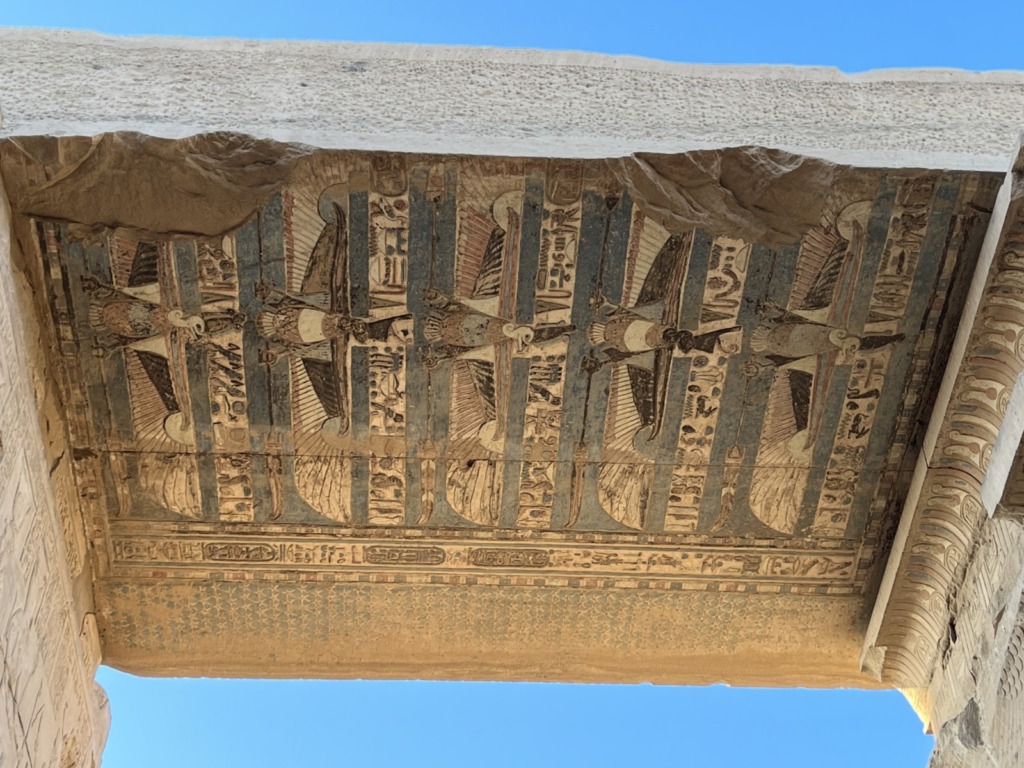
The Temple of Kom Ombo is a popular tourist site and an outstanding example of ancient Egyptian religious architecture. It is classified as a UNESCO World Heritage Site. It is still a place of pilgrimage for believers and lovers of history and architecture.
In my opinion : Another magnificent testimony of the architectural wealth of ancient Egypt. As for the other temples, it is preferable to make the visit accompanied by a guide! Especially since the temple is dedicated to not one but two gods, which is quite unique.
Temple of Philae
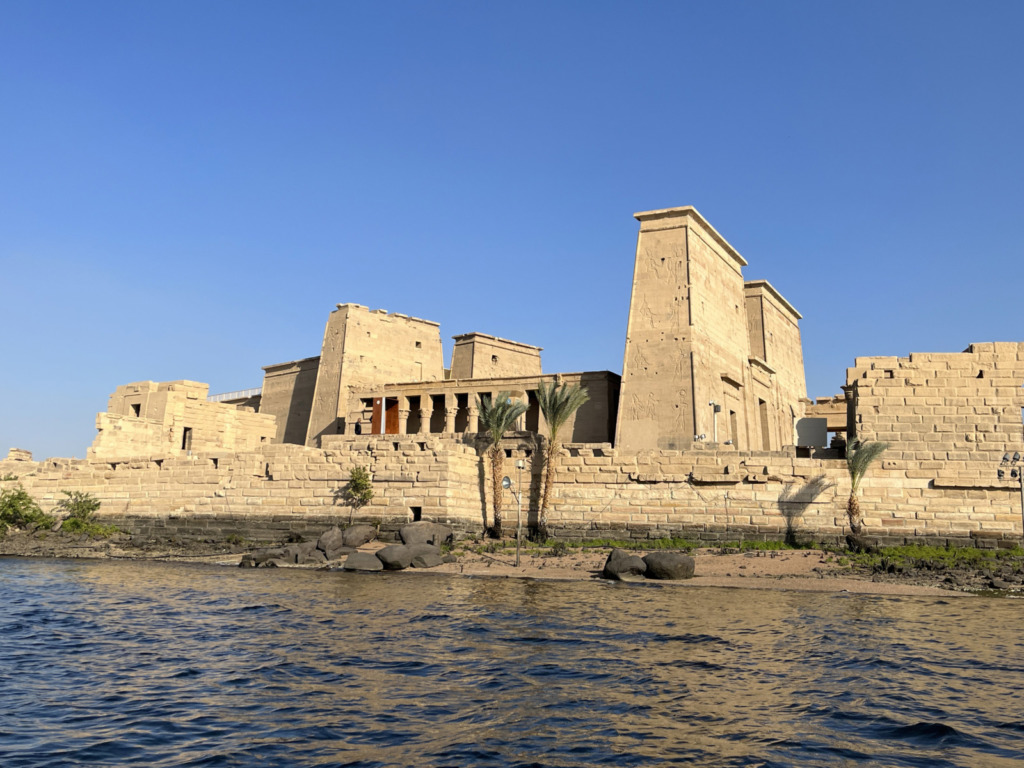
The Temple of Philae is an Egyptian temple dedicated to the goddess Isis, located on the island of Philae in Lake Nasser, Upper Egypt. It is considered one of the last pharaonic temples to be built and one of the most important temples dedicated to Isis. It was built during the Greco-Roman period, between the end of the 3rd century BC and the 4th century AD.
The temple is known for its magnificent reliefs, statues and inscriptions that describe the religious beliefs and myths of ancient Egypt. It is also known for its religious ceremonies and rituals that were celebrated inside. It is also remarkable for its architecture which is a mixture of Egyptian and Greco-Roman styles.
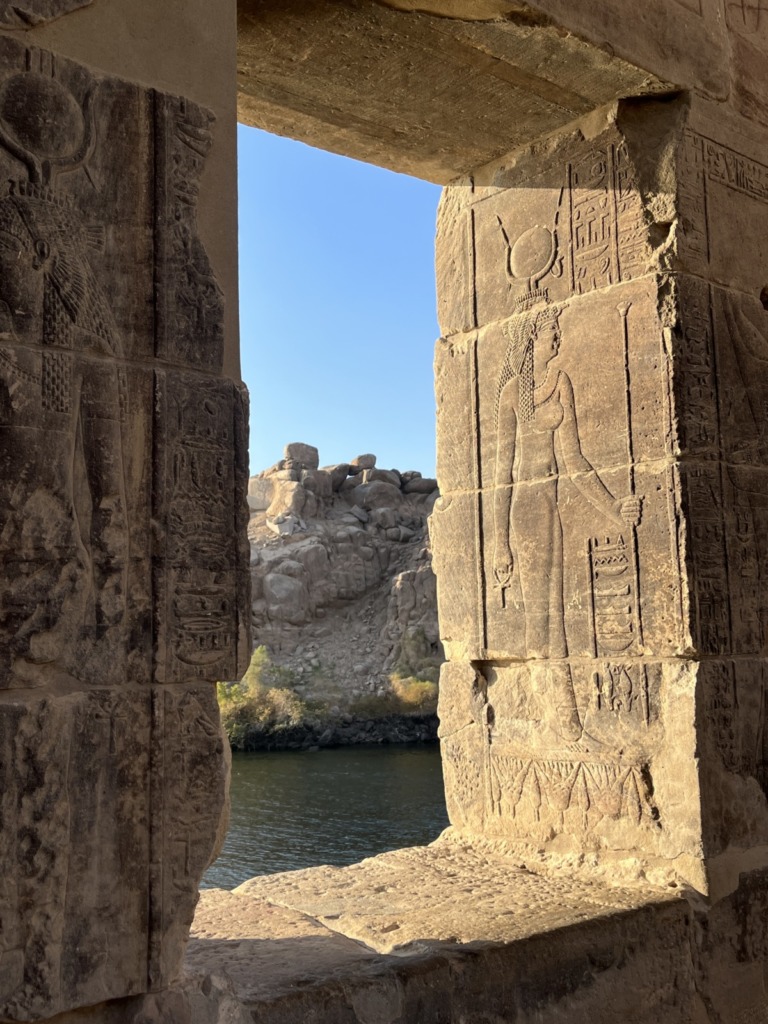
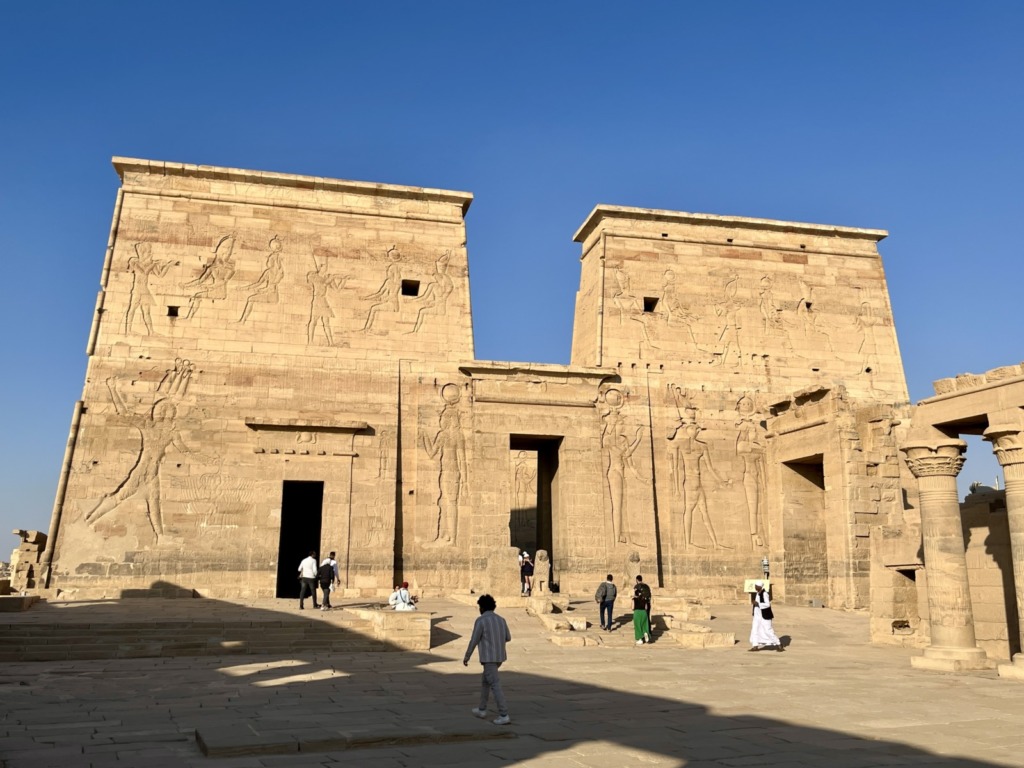
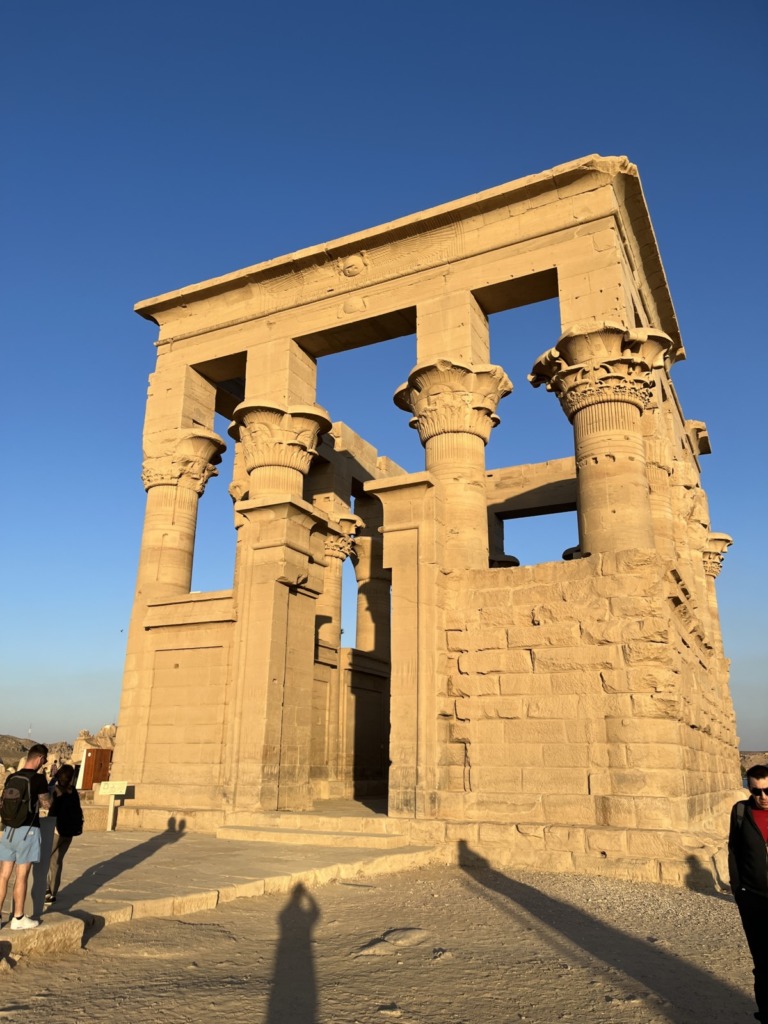
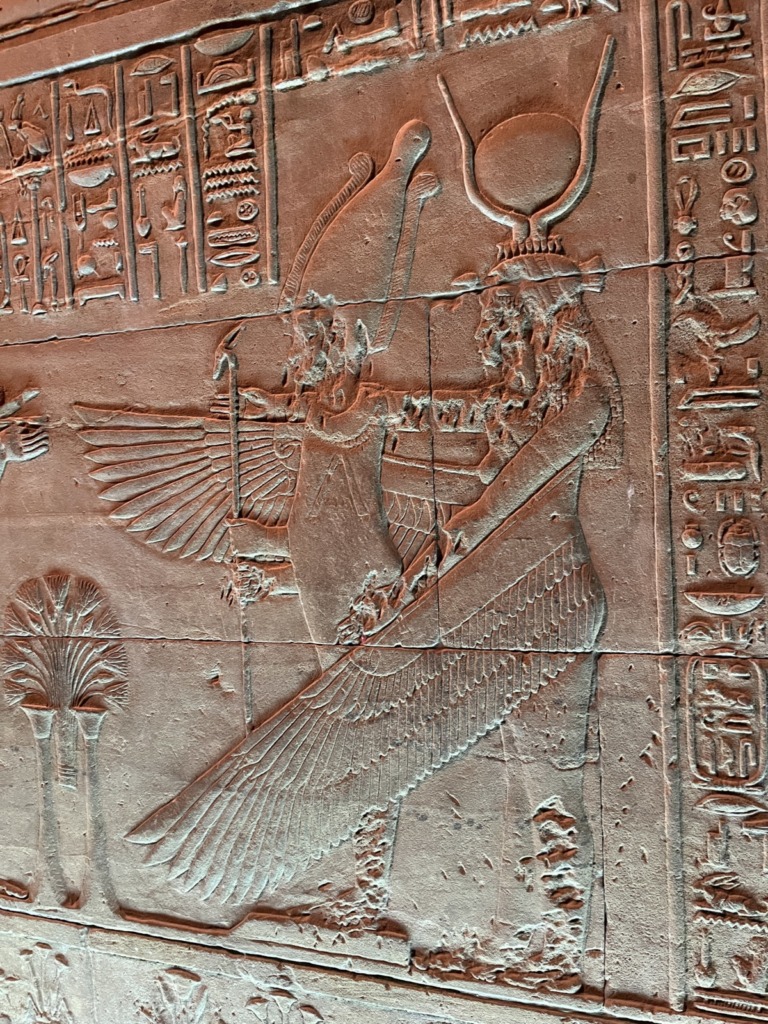
The Temple of Philae was moved stone by stone to avoid being swallowed by the waters during the construction of the Aswan High Dam. It is classified as a UNESCO World Heritage Site. It is still a place of pilgrimage for believers and lovers of history and architecture.
In my opinion : The fact that this temple is located on an island makes its visit even more magical !
Djebel Silsila Quarries
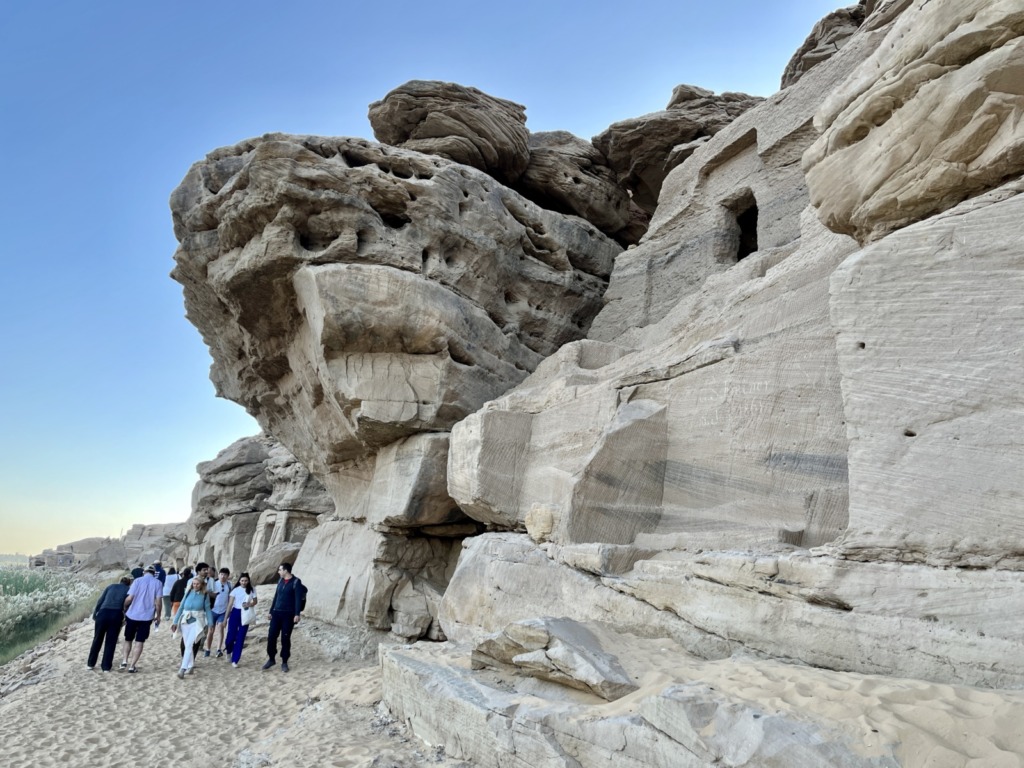
The Quarries of Djebel Silsila are a set of stone quarries located on the banks of the Nile, in the region of Silsila, in Upper Egypt. They are quarries that were used to extract materials to build temples, tombs and statues in ancient Egypt. These quarries were active for several millennia, from the Predynastic period to the Roman period.
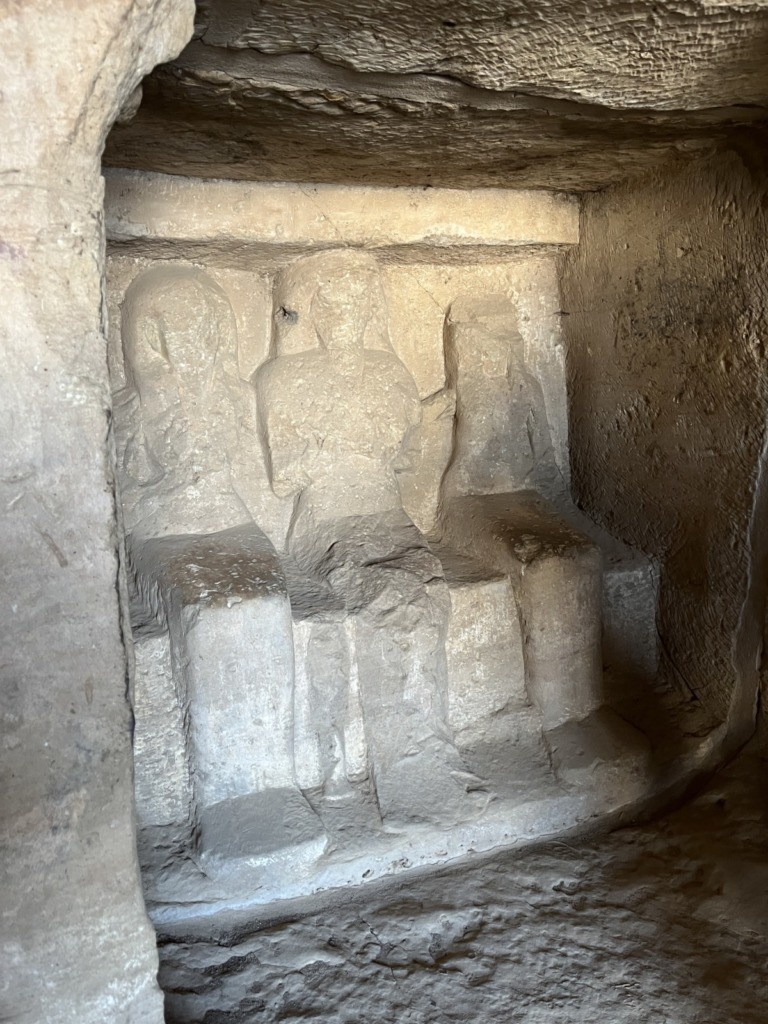
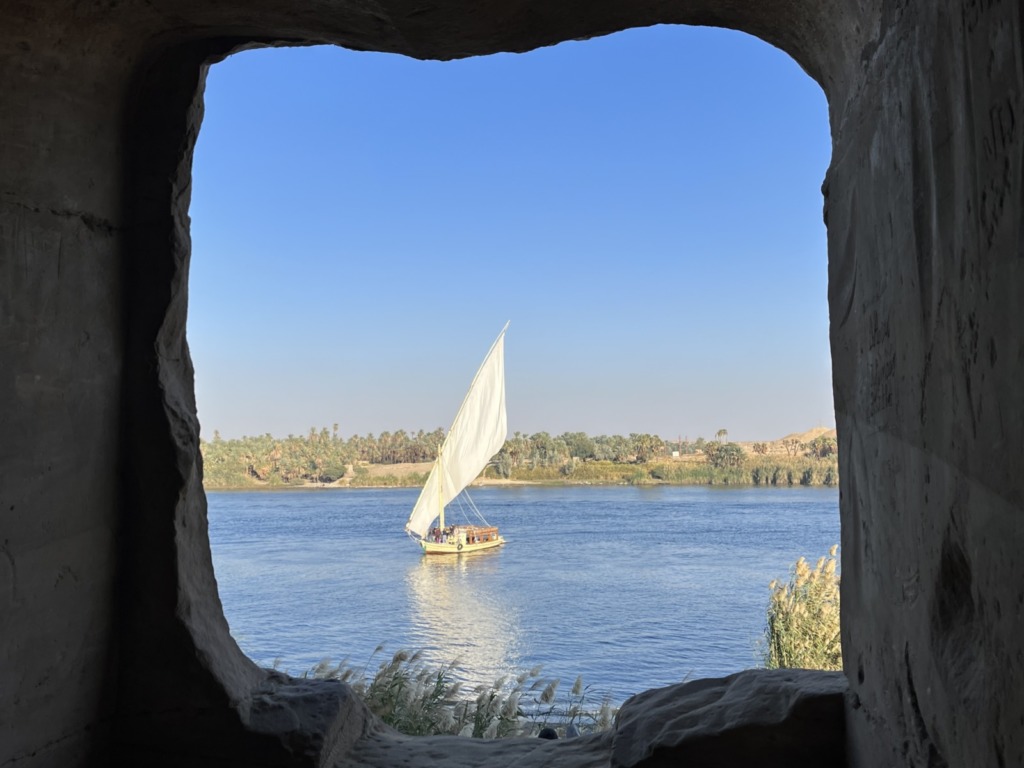
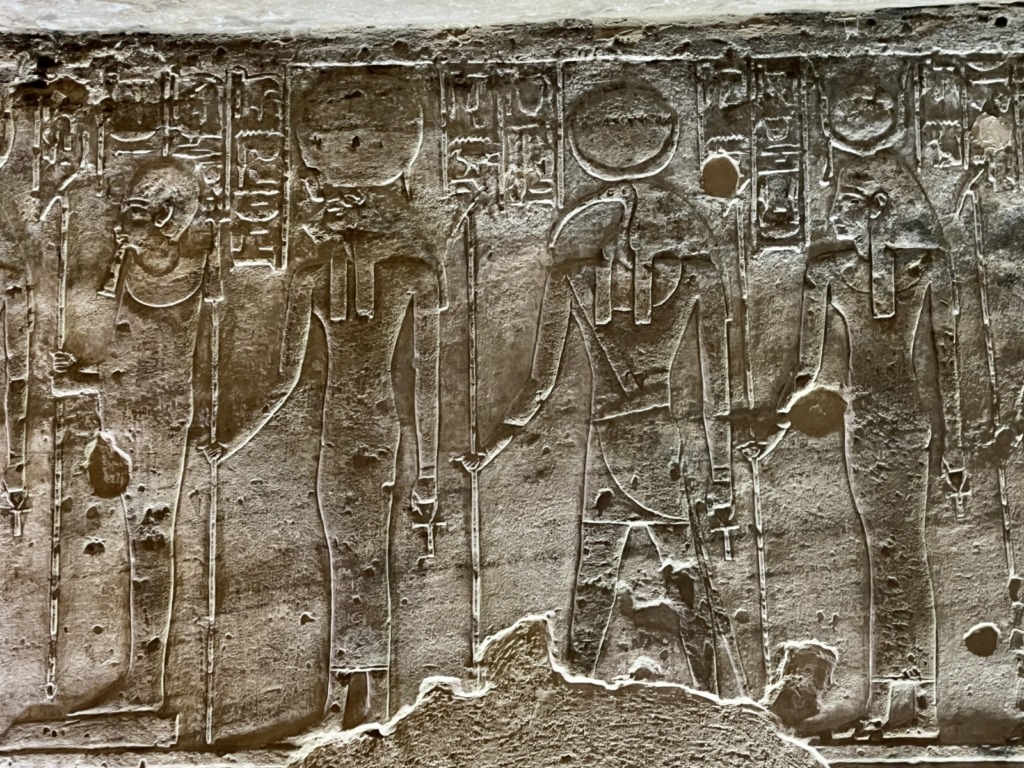
The quarries of Jebel Silsila are particularly known for the quality of their red granite, which was used to build famous temples and tombs in the region, such as the Temple of Karnak in Luxor, the temple of Philae, among others. The quarries of Jebel Silsila are also an important archaeological site for the study of the technology of stone extraction and the use of these materials in the architecture of ancient Egypt. The quarries were discovered by archaeologists in the 1800s and have been explored ever since.
In my opinion : An interesting visit, which allows to go back to the genesis of the construction of the various temples seen during the stay. You will not only see stones, there are several temples built directly in the rock, with statues, frescos… Finally, a magnificent view on the Nile awaits you if you go up a little!
Abu Simbel
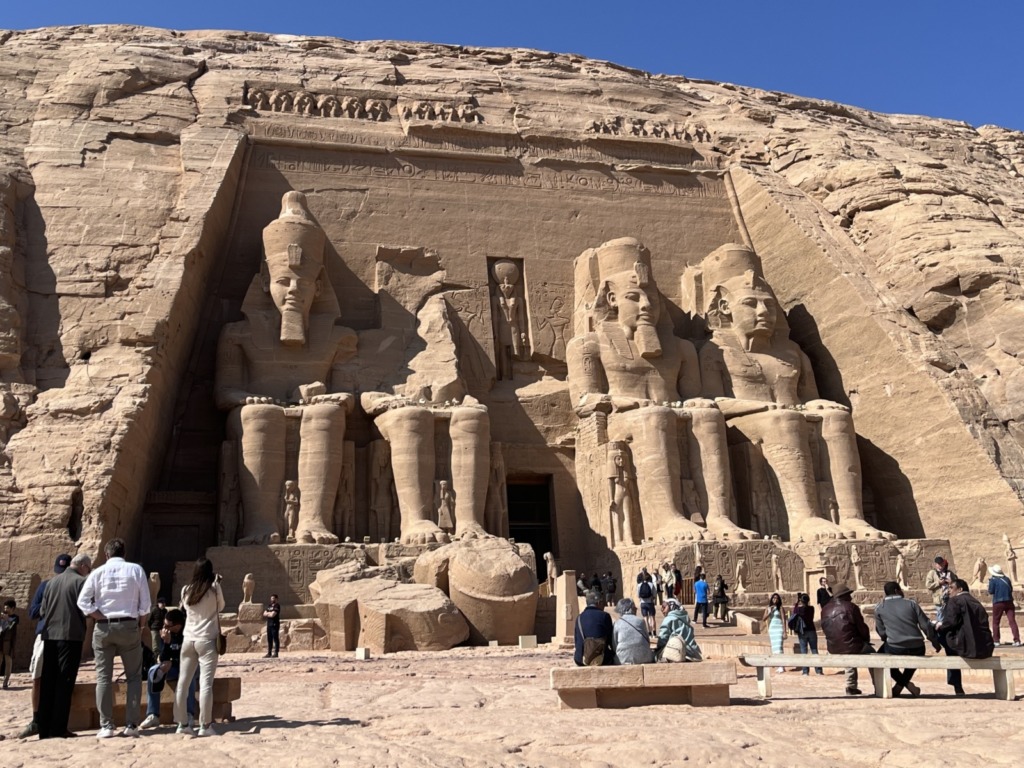
The Abu Simbel temples are two massive rock temples in southern Egypt, near the border with Sudan. They were built during the reign of Pharaoh Ramses II in the 13th century BC as a lasting monument to himself and his queen Nefertari. The temples were relocated in the 1960s to avoid their flooding during the construction of the Aswan High Dam.
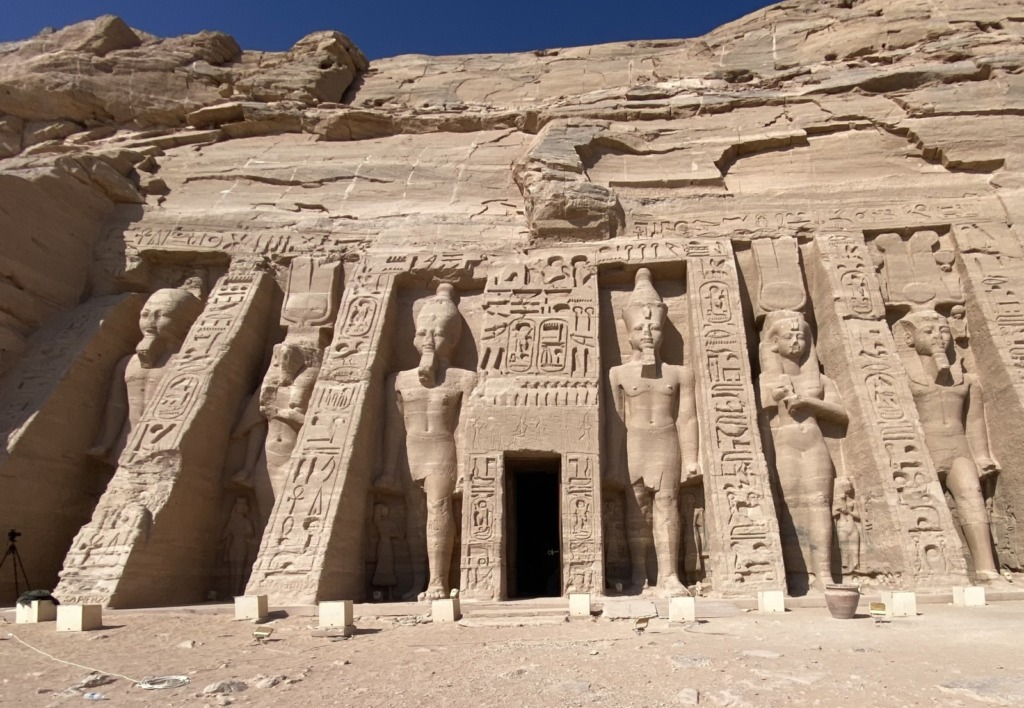
The temples are particularly known for their massive statues, the four 20 meter tall statues of Ramses II that adorn the facade of the larger temple. The temples are also notable for their alignment, as twice a year, on February 22 and October 22, the sun shines through the temple and illuminates the statues of the gods inside the temple.
The temples were rediscovered in 1813 by the Swiss scholar Jean-Louis Burckhardt, and were widely known throughout the world after their relocation in the 1960s. The temples are now a UNESCO World Heritage site and a popular tourist destination.
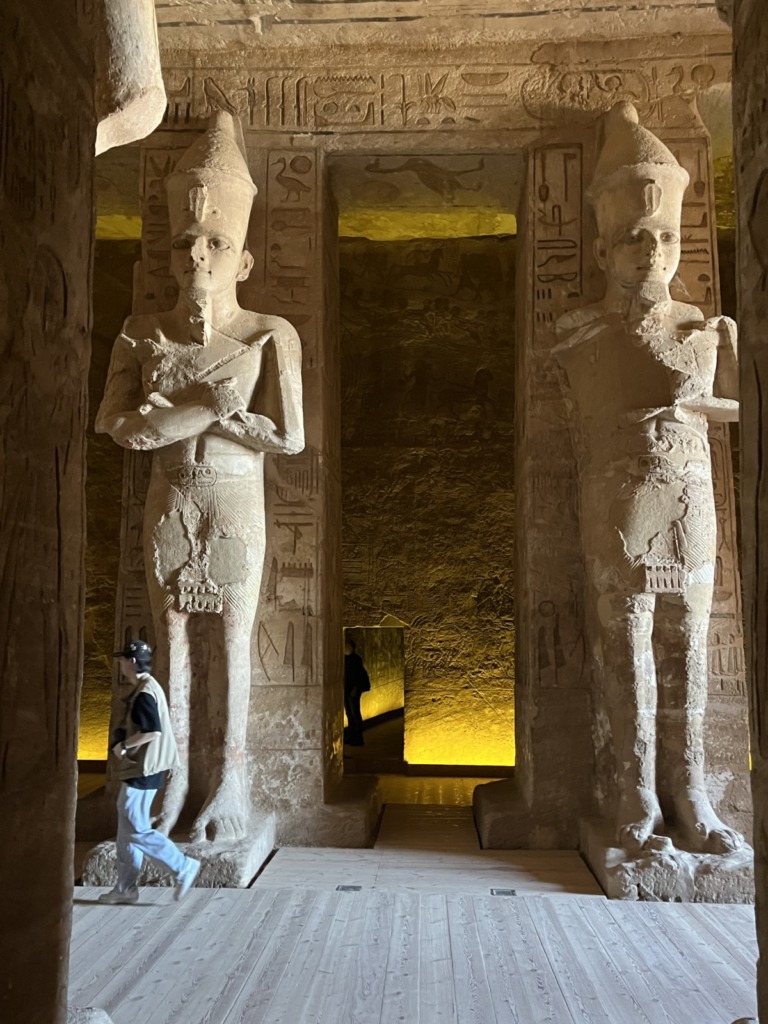
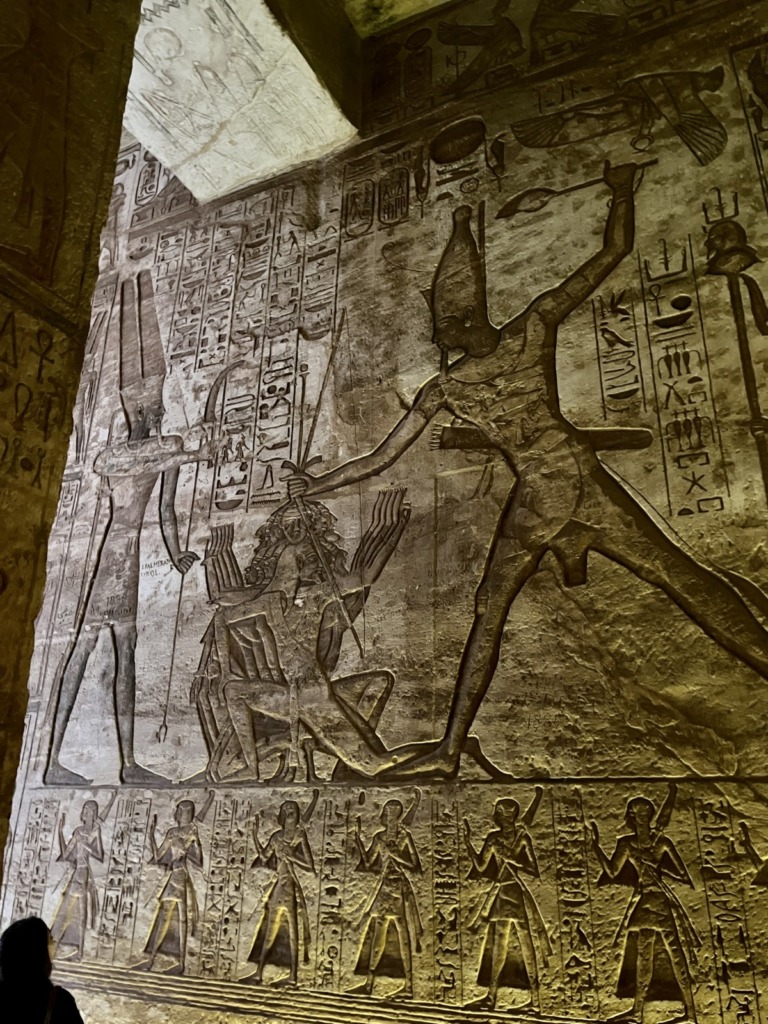
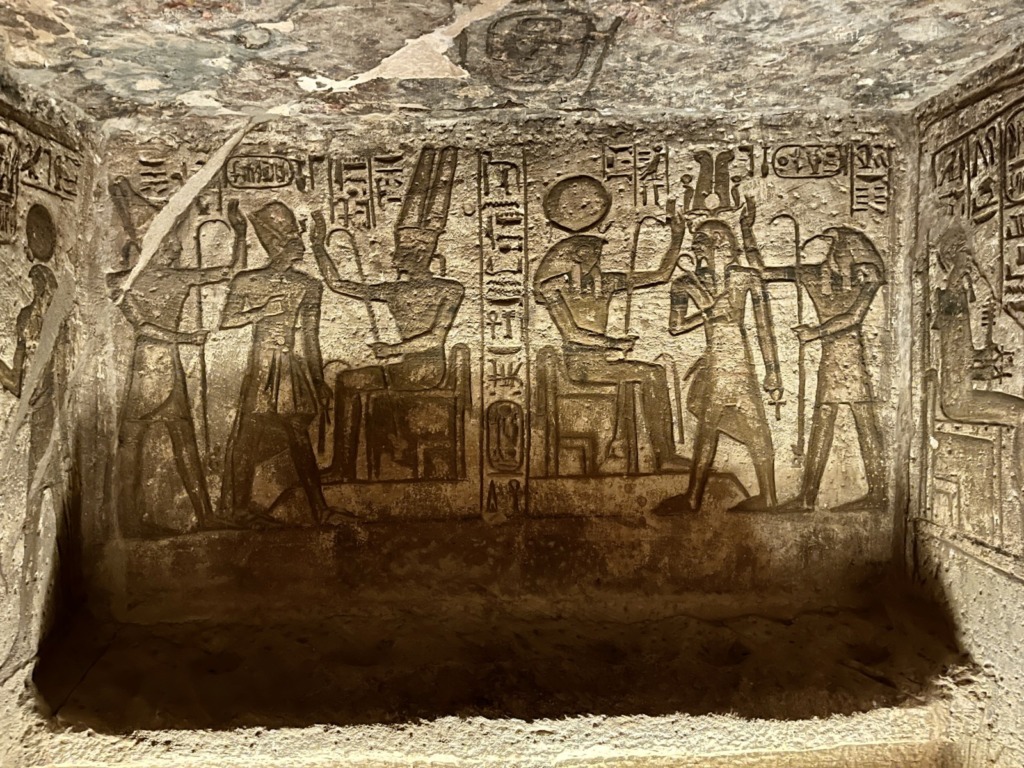
Abu Simbel is considered as one of the most impressive and striking monuments of ancient Egypt, and it is a remarkable example of the engineering and architectural achievements of the ancient Egyptians.
In my opinion : The most beautiful temple seen during this stay, the interior as well as the exterior are incredible to discover. It is necessary to foresee 3h30 of road from Aswan before arriving on the site. At certain times of the day, there are too many people to enter the temples! This is especially the case at sunrise and sunset. Around 10/11am, our guide had assured us that it would not be too crowded and it was the case.
Karnak Temple at Luxor
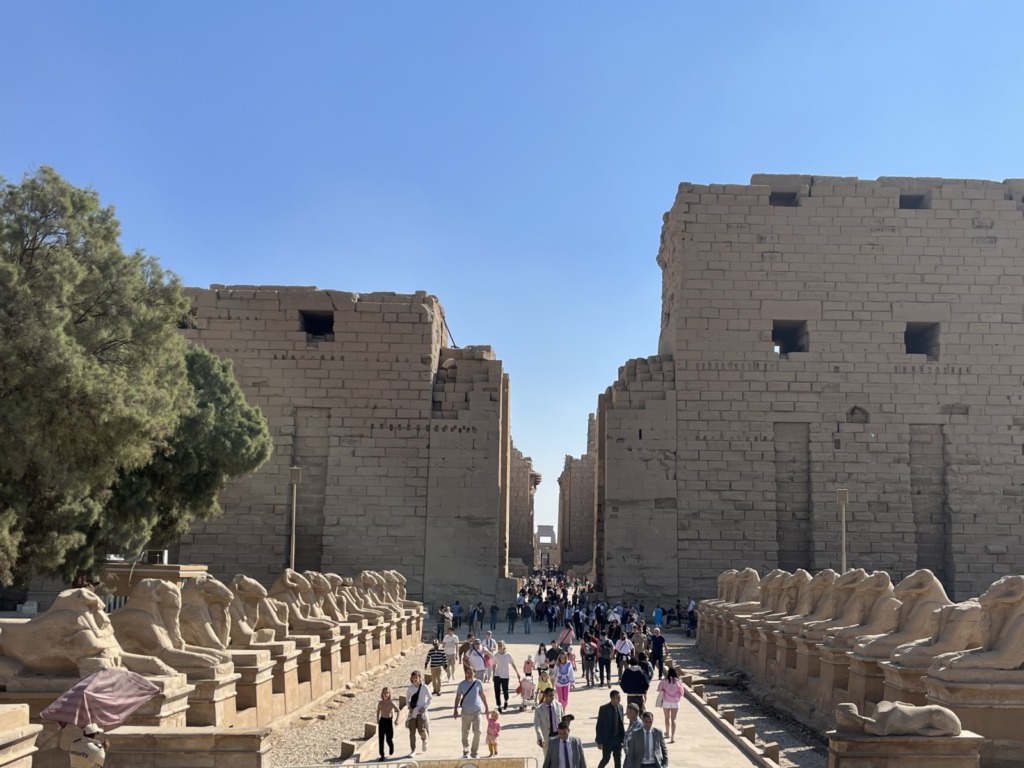
The Temple of Karnak is a complex of temples located in Luxor, Egypt. It is considered one of the largest and most important temples of ancient Egypt. It was built over several centuries by pharaohs of the 18th to 20th dynasties and is dedicated to the god Amun-Ra, the supreme god of the time.
The temple complex is made up of several buildings, including the main temple, the Temple of Montu, and the Temple of Khonsu, among others. It is known for its monumental pylons, hypostyle halls, obelisks, colossal statues, and detailed reliefs that depict religious stories and beliefs of ancient Egypt. The temple is also famous for its imposing size, which includes a hypostyle court of 54 columns, the largest ever built.
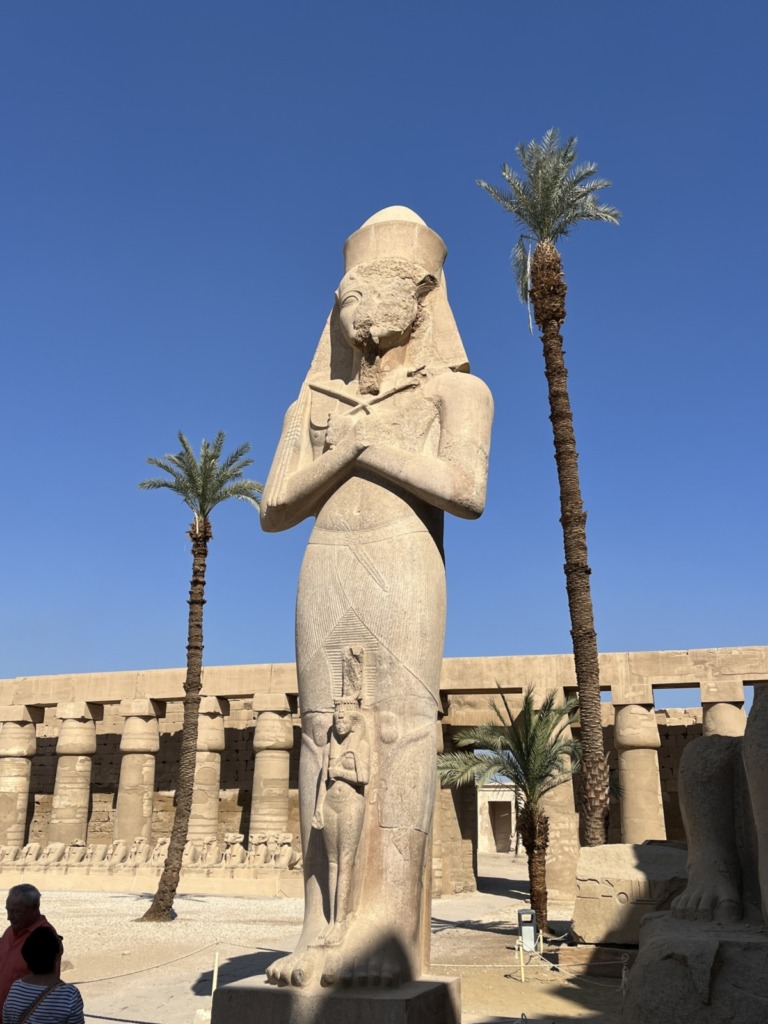
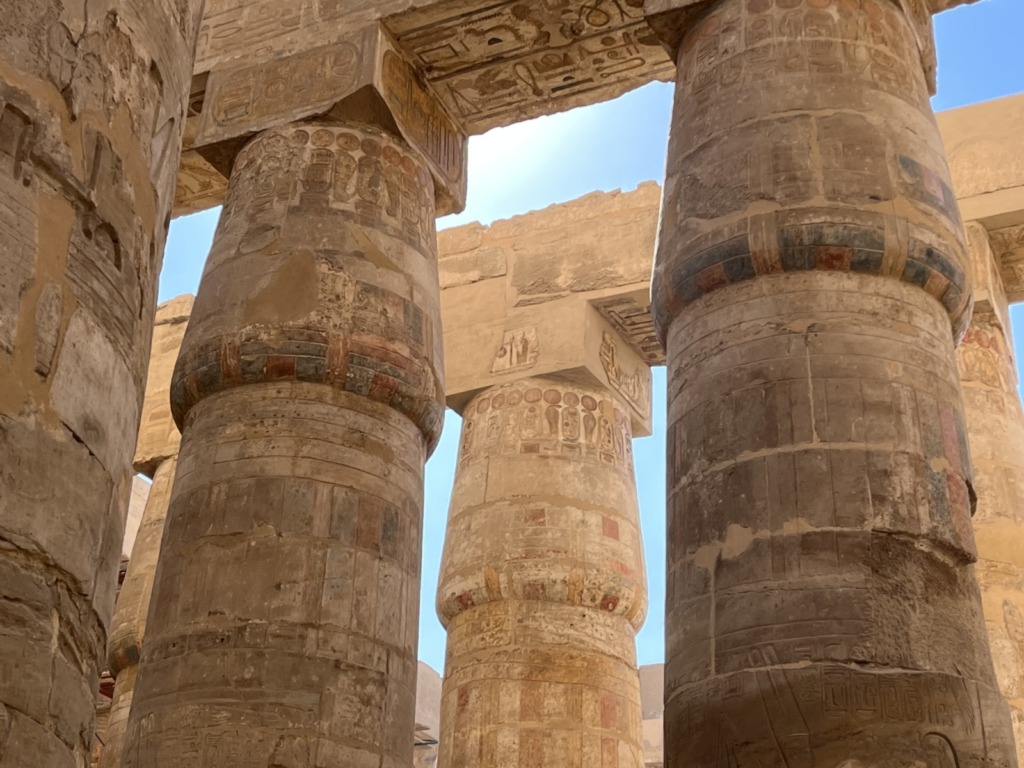
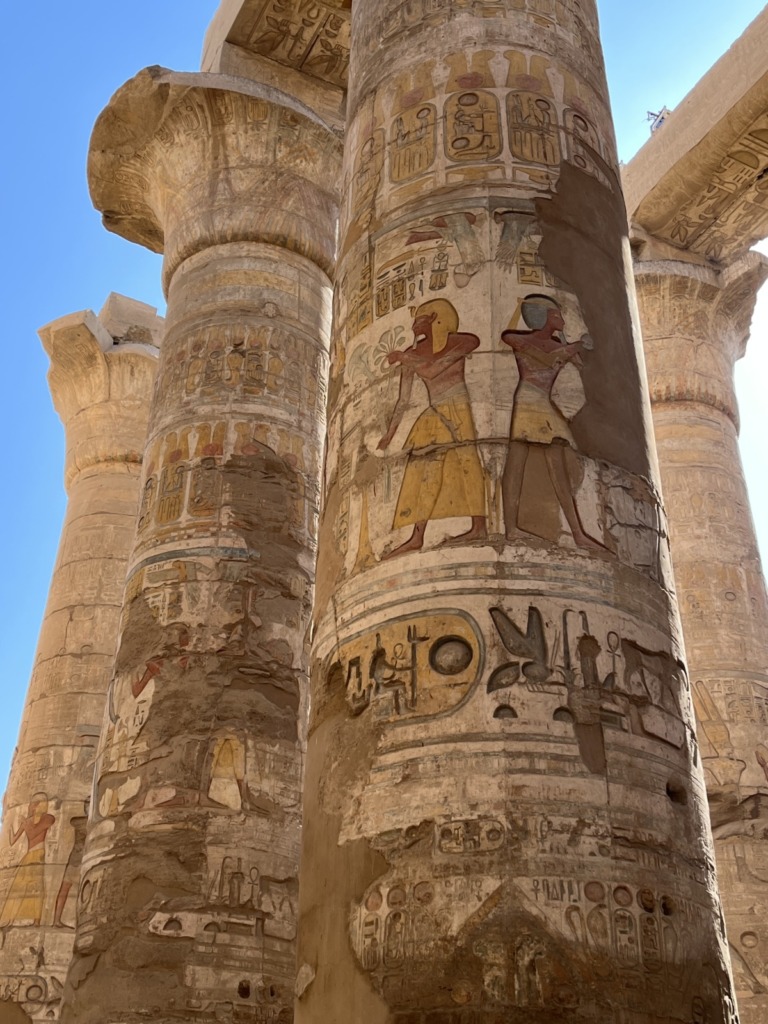
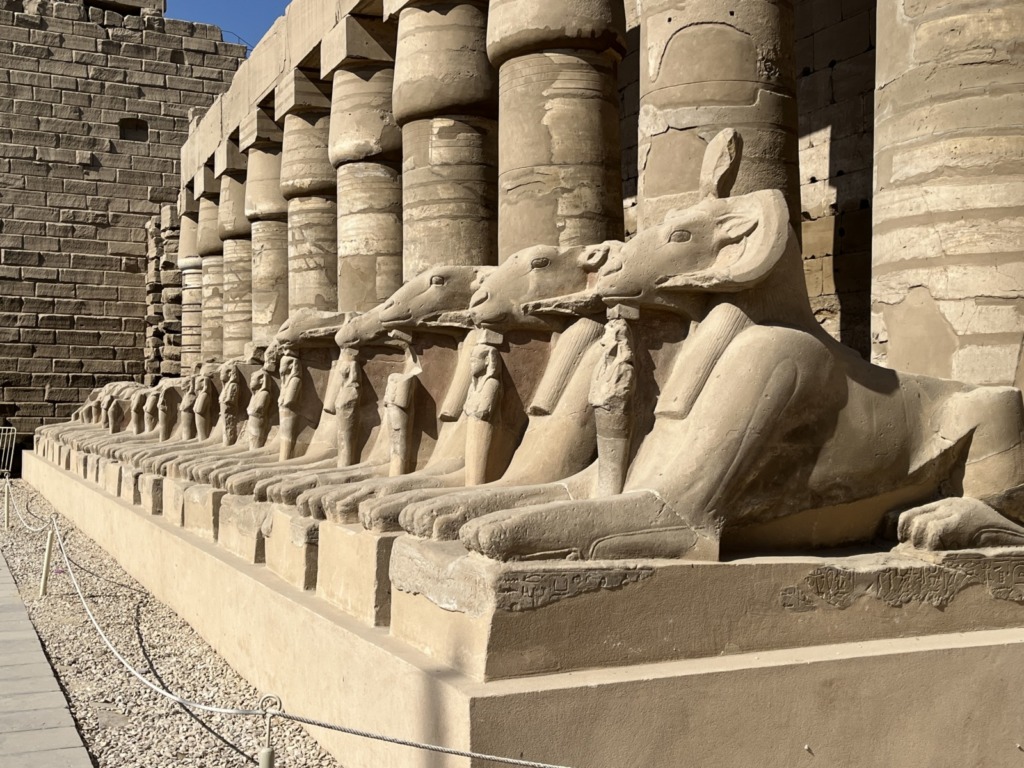
The Temple of Karnak is a popular tourist destination and is considered one of the jewels of Egyptian architecture. It is a UNESCO World Heritage Site and a remarkable example of ancient Egyptian religious architecture. It is still a pilgrimage site for believers and lovers of history and architecture.
In my opinion : We are more in a complete archaeological site than in a “simple” temple. There is so much to visit in the temple of Karnak! The hypostyle room and its enormous columns magnificently decorated is really an unforgettable place.
Temple of Amun at Luxor
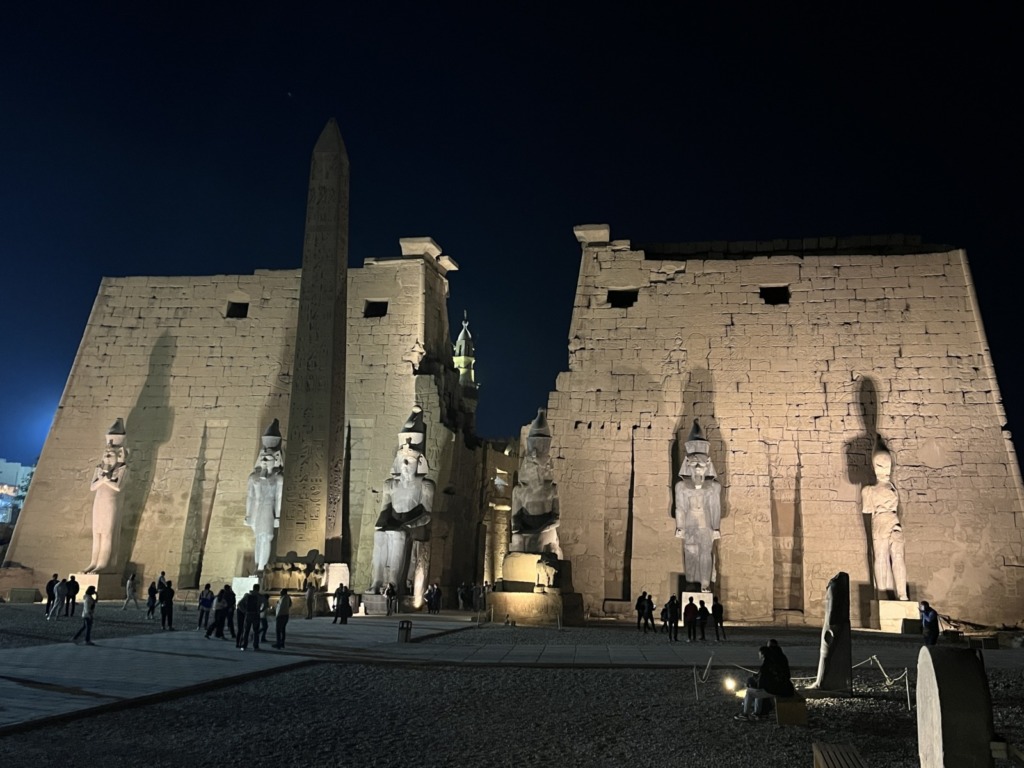
The Temple of Amun at Luxor, also known as the Temple of Luxor, is an ancient Egyptian temple located on the east bank of the Nile in the city of Luxor (formerly known as Thebes).
The temple was dedicated to the god Amun, who was considered the king of the gods and the patron of the pharaohs. The temple was built during the New Kingdom period, around 1400 BCE, and was expanded and embellished by subsequent pharaohs over the centuries. The temple was part of a larger complex that included the Temple of Mut and the Temple of Chonsu.
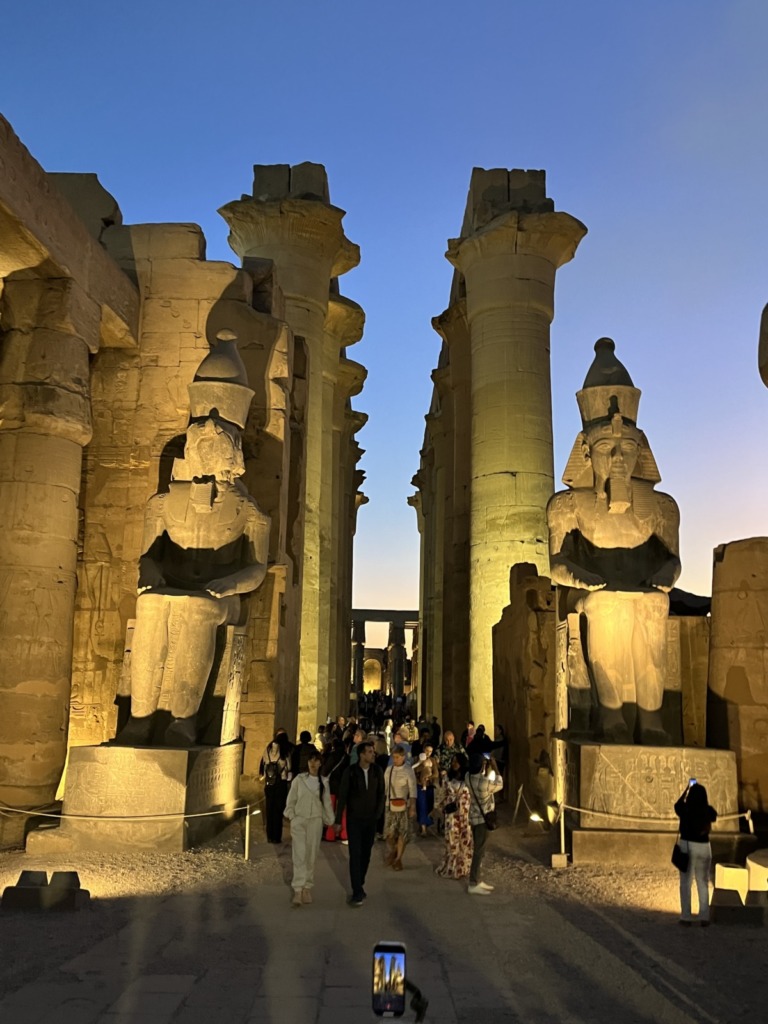
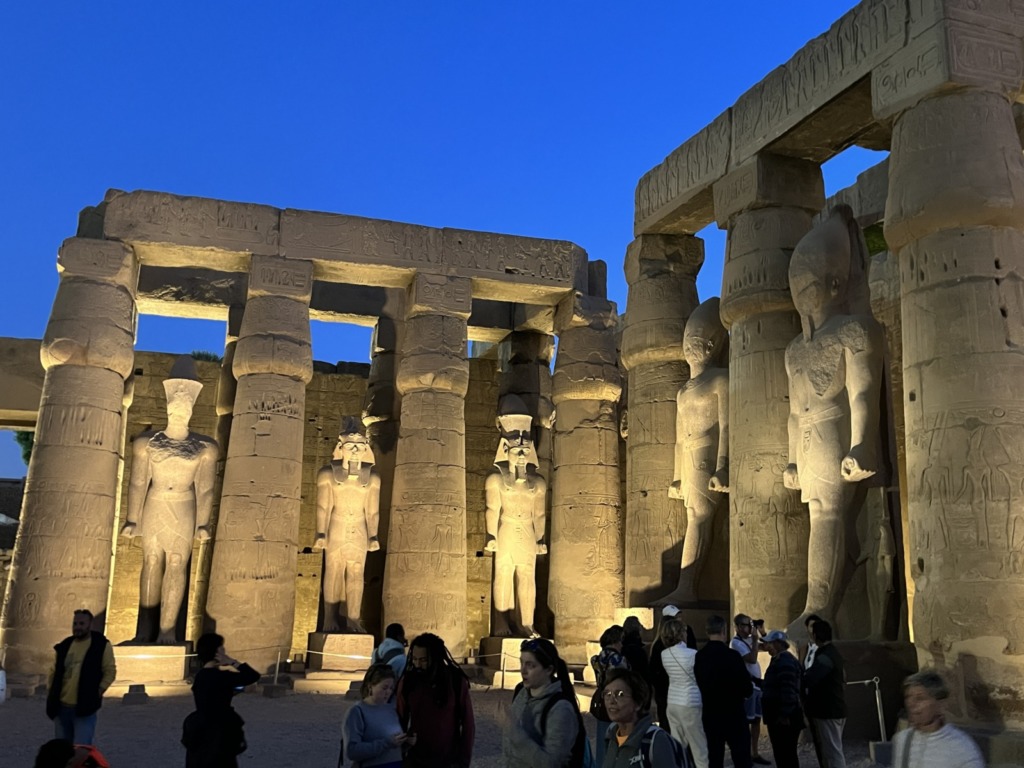
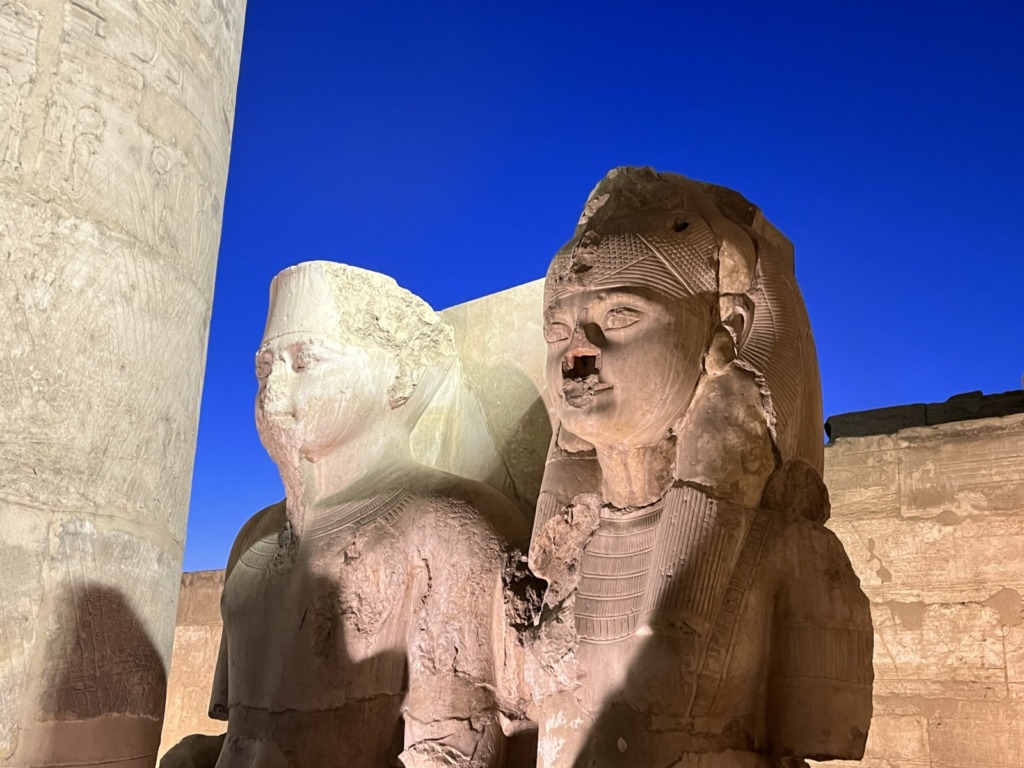
The main features of the Temple of Amun at Luxor include the pylon, the hypostyle hall, the obelisks, and the sacred lake. The temple was used for religious rituals and ceremonies, and was also a popular destination for travelers and tourists in ancient times. Today, the Temple of Amun at Luxor is a popular tourist destination and a UNESCO World Heritage Site.
In my opinion : A site to visit at nightfall, because the lighting is sensational! The different statues are monumental. The guide taught us that some of the statues at the entrance of the building were not original, especially the one on the far left, which on closer inspection is a total failure! (one leg bigger than the other, rough finishing, not respecting some architectural rules …)



